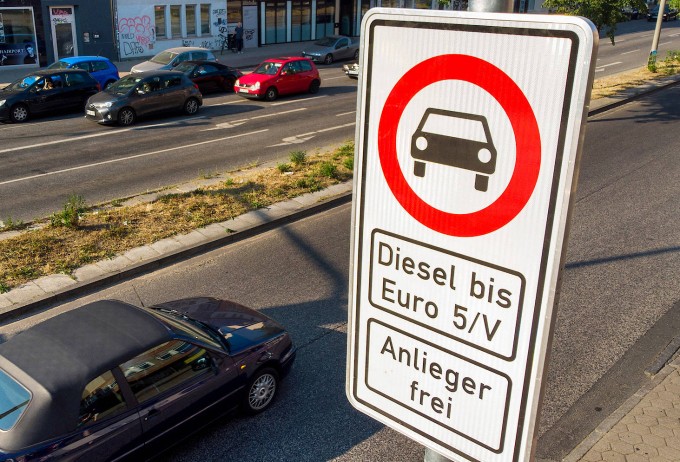A On Thursday, the fierce debate on nitrogen dioxide pollution on the road has arrived. Hamburg is now the first driving ban for older diesel cars in Germany. Even if the city fulfills its duty to improve the air quality, it is an inglorious premiere. After the diesel summit last summer, politics and car manufacturers agreed that driving bans should be avoided. But all emergency measures did not help. And because bans could also come elsewhere, will be discussed further.
Anyone familiar with the Hamburg case soon realizes that the prohibition signs set up there are above all one thing: Symbol politics. They are to protect only two kilometers of the road network from cars with diesel engines of the Euro 5 and older emission standards: 600 meters of the Max-Brauer-Allee are blocked for such diesel cars and trucks; At 1,600 meters on Stresemannstrasse, the ban applies to older trucks.
Above all, there are the numerous exceptions, keyword: residents free. The Hamburg Senate puts it this way: Residents are residents and their visitors, ambulances, garbage trucks, craftsmen and delivery traffic. But also customers and employees of shops, offices, practices or law firms are among them. In other words, those who now catch the checkers with an older diesel on the closed 600 meters of the Max-Brauer-Allee, can theoretically still talk out that he wants to visit a shop. If he is credible, he would have to go unpunished.
A very German debate
Despite all the excitement in the diesel debate, despite possible further driving bans in Stuttgart, Munich or Dusseldorf – if it runs like in Hamburg, one must not be afraid of driving bans. The Hamburg signs smell suspiciously like a prank from Schilda. There is a strong case for further non-driving solutions to take on no less abstruse forms.
In general, the very German debate on diesel, nitrogen oxides and driving bans obscures a more fundamental challenge facing all cities in the world. Soon, in many places, the question will no longer be whether emissions limits will be met, but how cities will be saved from the traffic collapse as more and more people move to urban centers.
Public transport at the capacity limit?
The United Nations has just recalculated the degree of urbanization: 70 years ago, about one third of the world’s population lived in cities, today it is well over half. By 2050, it should be 68 percent. Two more numbers make it clear what that means. In 1950, the urban world population was 750 million, today it is 4.2 billion. More people mean more traffic.
Europe is still doing well compared to other parts of the world. The proportion of the urban population is already large today, and the population is not growing as fast as in Asia. This makes the metropolises in developed countries to the laboratories for the mobility of the future. Many European cities, on the other hand, encounter spatial limits. This is precisely where the question of how cities can remain mobile despite population growth can and should be clarified.
Even if it is a horror for many drivers: An answer will be to say goodbye to a part of motorized private transport. That cuts down on freedom, but it’s up to it anyway when cities grow. And how free is a motorist actually, when he sits in his own vehicle, but only progressing at a walking pace? Getting around becomes multimodal, as the example of the car manufacturer Ford shows. In order to get his 18,000 employees into the traffic chaos around Cologne in time for work, he recently promoted travel with a mix of local transport, car sharing and bike sharing – as an “attractive alternative to owning a car”, as the company expressly says. Mind you: That’s what an automaker does.
Mobility solutions as an export hit
Another answer will be to provide more public space for other forms of transportation than car traffic. Cycle lanes or bicycle lanes are the cheaper solution for society compared to the expansion of local public transport. In addition, because of the limited space available in many cities, he often drives close to the capacity limit.
After all, digitization will also provide solutions. If motorists know, thanks to networking, where the next free parking space is, there is no need to search for parking spaces. When connected cars communicate with each other, urban traffic becomes more efficient. But it will take a few years until then. In addition, it is urgent to regulate how personal data is protected in a networked traffic world.
If they succeed, these new mobility solutions can also become an economic factor and export hit. A good 130 years after the invention of the automobile, that would be something that was also a long car: a real technical and social progress.
